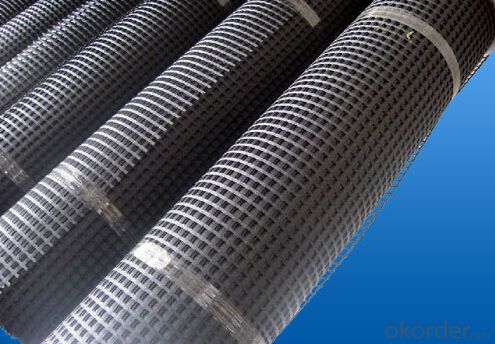- Understanding the Role of Geomembrane Liners in Waste Management
- Innovations in Geomembrane Liners for Water Management
- Geomembrane Liners: A Comprehensive Guide
- The Future of Geomembrane Liners in Civil Engineering
- Geomembrane Liners: Enhancing Landfill Stability
Manager:
WhatsApp:+86 177 0135 2670
Tel:+86 177 0135 2670
Email:marketing@okorder.com
Address:3rd Floor, No.2 Building, No.1 Sanlihe Road
The Importance of HDPE Geomembranes in Wastewater Treatment
Wastewater treatment is a critical process that helps in managing and treating the wastewater generated from various sources like residential, commercial, and industrial areas. One of the essential components in this process is the use of hdpe Geomembranes. These high-density polyethylene membranes are designed to provide a barrier that prevents the contamination of soil, groundwater, and surface water by the wastewater. But why are HDPE geomembranes so important in wastewater treatment? Let's dive into the details and explore their significance in this process.

The Role of HDPE Geomembranes
HDPE geomembranes serve as a crucial component in the construction of wastewater treatment facilities. They are used in various applications such as lining of ponds, tanks, and lagoons, as well as in the construction of secondary containment systems. The primary function of these geomembranes is to prevent the leakage of wastewater and protect the environment from potential contamination.
Environmental Protection
The environment is a delicate ecosystem that needs to be protected at all costs. HDPE geomembranes play a vital role in safeguarding the environment from harmful contaminants present in the wastewater. By acting as a barrier, they prevent the seepage of contaminants into the soil and groundwater, thus preserving the natural resources for future generations.
Durability and Longevity
HDPE geomembranes are known for their durability and longevity. They can withstand harsh weather conditions, chemical exposure, and UV radiation, making them an ideal choice for long-term use in wastewater treatment facilities. Their ability to resist degradation and maintain their integrity over time ensures that the wastewater treatment process remains efficient and effective.
Cost-Effectiveness
Investing in HDPE geomembranes may seem like a significant upfront cost, but they prove to be cost-effective in the long run. The low maintenance requirements and long lifespan of these geomembranes reduce the overall operational costs of the wastewater treatment facility. Additionally, the prevention of environmental contamination can save on potential cleanup costs and legal liabilities.
Flexibility and Adaptability
HDPE geomembranes are highly flexible and adaptable, making them suitable for various applications in wastewater treatment. They can be easily installed over uneven surfaces and can conform to the shape of the structure they are lining. This flexibility allows for easier installation and reduces the chances of leaks and failures.
Chemical Resistance
Wastewater can contain a wide range of chemicals, some of which can be highly corrosive. HDPE geomembranes exhibit excellent chemical resistance, ensuring that they do not break down or degrade when exposed to these chemicals. This property is crucial in maintaining the structural integrity of the geomembrane and the effectiveness of the wastewater treatment process.
The Installation Process
The installation of HDPE geomembranes is a meticulous process that requires careful planning and execution. It involves several steps, including site preparation, geomembrane installation, and testing for leaks. Proper installation is crucial to ensure the longevity and effectiveness of the geomembrane.
Site Preparation
Before the installation of the geomembrane, the site must be prepared to ensure a smooth and stable surface. This includes grading, compacting, and cleaning the area to remove any debris or contaminants that could interfere with the installation process.
Geomembrane Installation
The actual installation of the HDPE geomembrane involves unrolling the membrane, positioning it correctly, and securing it in place. Special care must be taken to avoid any damage to the membrane during this process. Seams must be carefully sealed to prevent any leaks.
Leak Testing
After the installation is complete, leak testing is conducted to ensure the integrity of the geomembrane. Various testing methods, such as vacuum box testing or electric field vector mapping, can be used to identify any potential leaks and address them before the system goes into operation.
The Future of HDPE Geomembranes in Wastewater Treatment
As the world continues to grapple with environmental challenges and the need for sustainable wastewater management solutions, the role of HDPE geomembranes is expected to grow. With advancements in technology and materials, we can expect to see improvements in the performance and efficiency of these geomembranes.
In conclusion, HDPE geomembranes are an indispensable part of wastewater treatment. Their ability to protect the environment, ensure the longevity of wastewater treatment facilities, and provide a cost-effective solution makes them a valuable asset. As we move forward, it is essential to continue investing in the development and use of HDPE geomembranes to safeguard our environment and ensure the sustainability of our wastewater treatment processes.
- Previous:HDPE Geomembranes: A Barrier Against Soil Erosion
- Next:HDPE Geomembranes: The Solution for Chemical Plant Lining
-
2024-12-05Geomembrane Liners: A Comprehensive Guide






